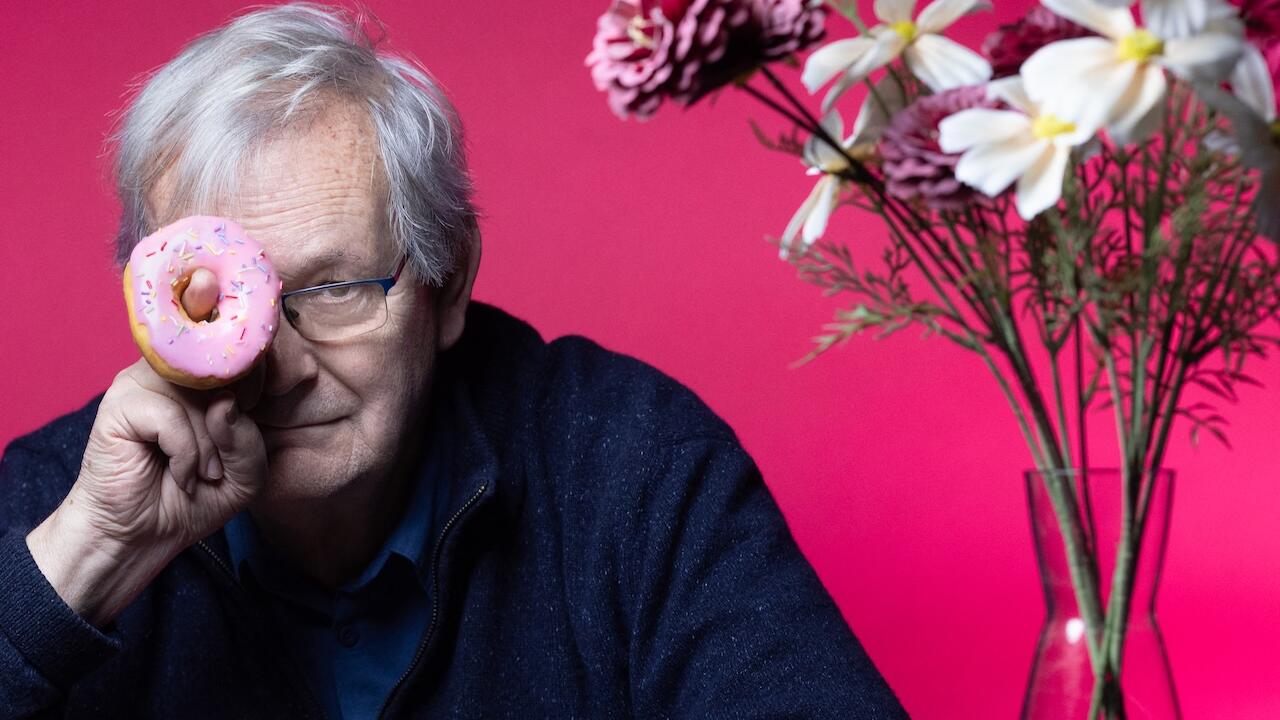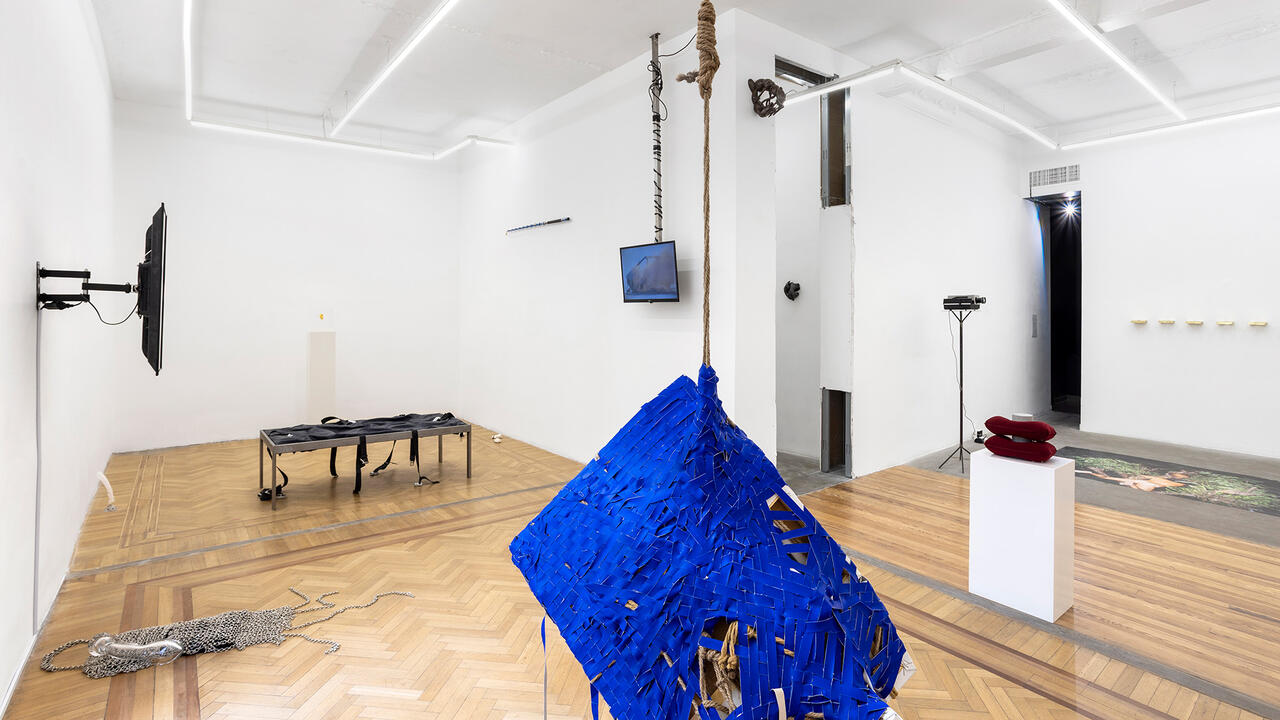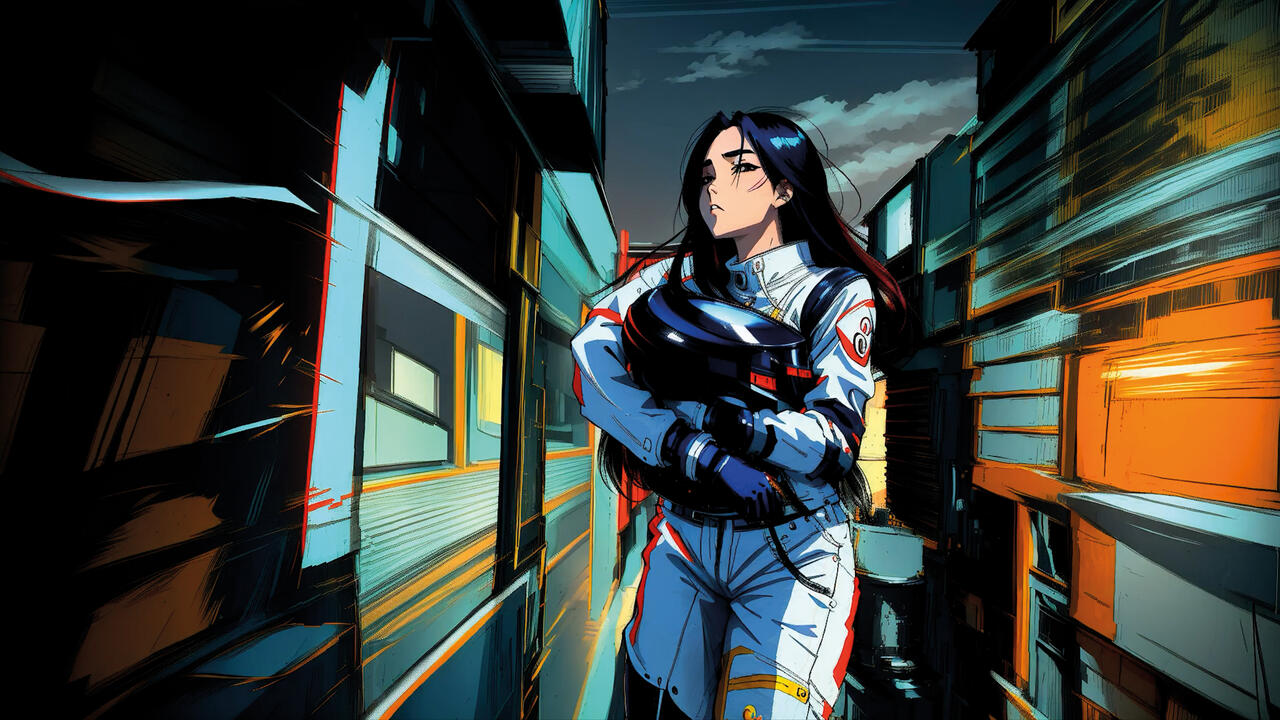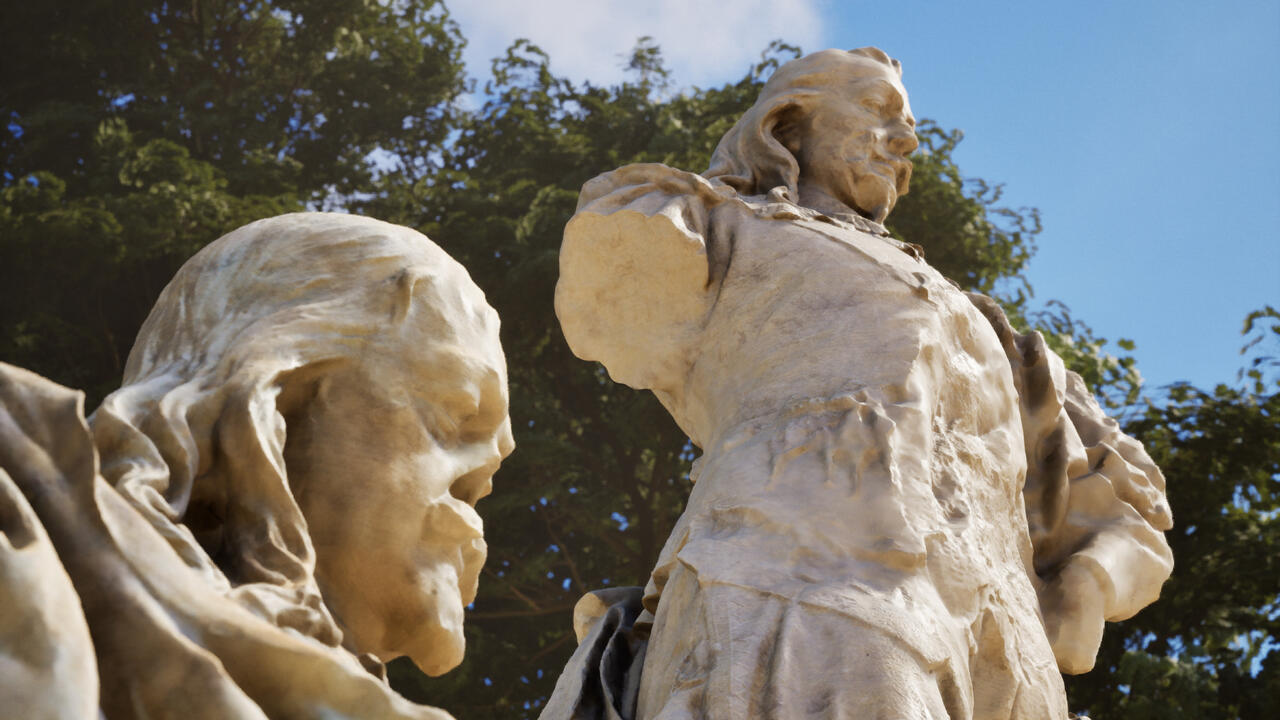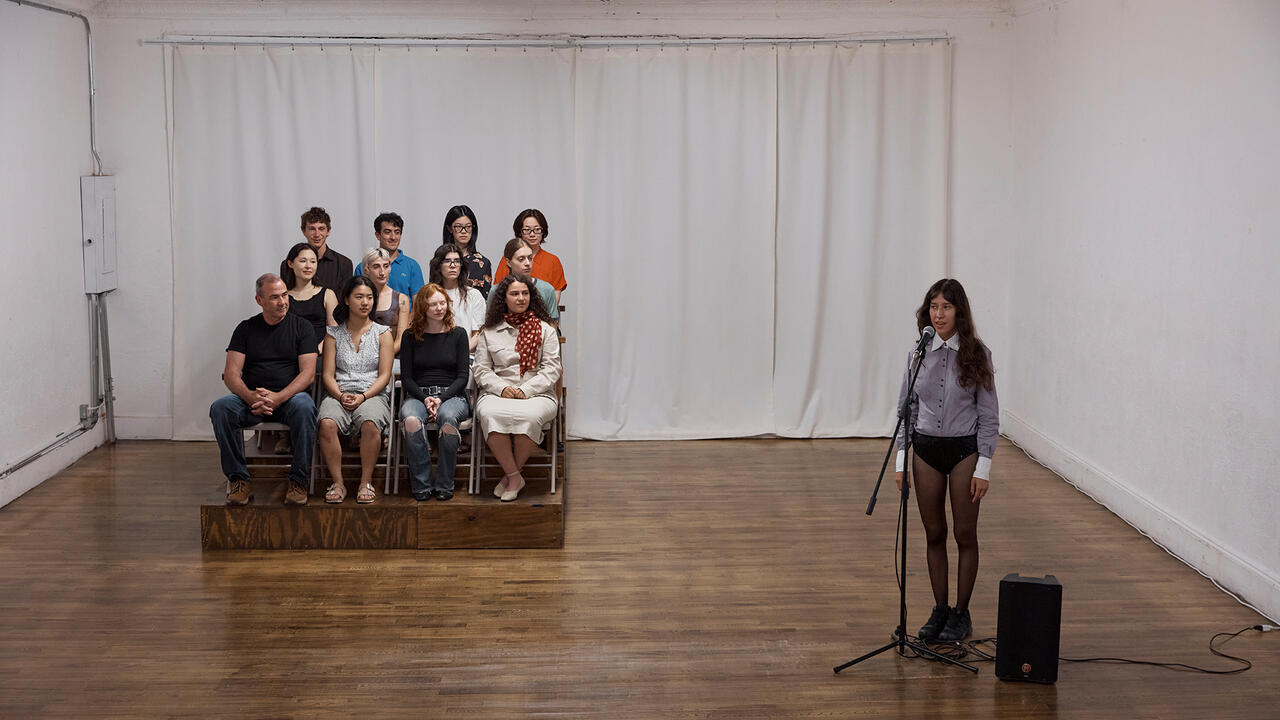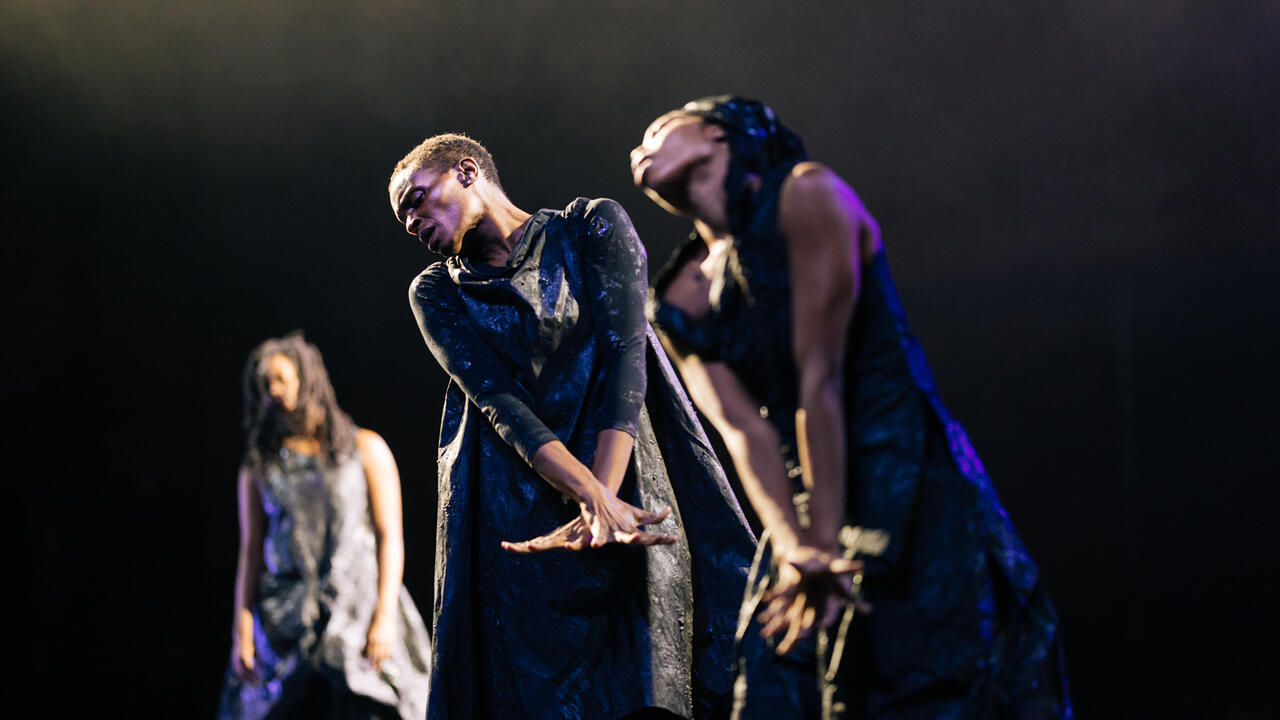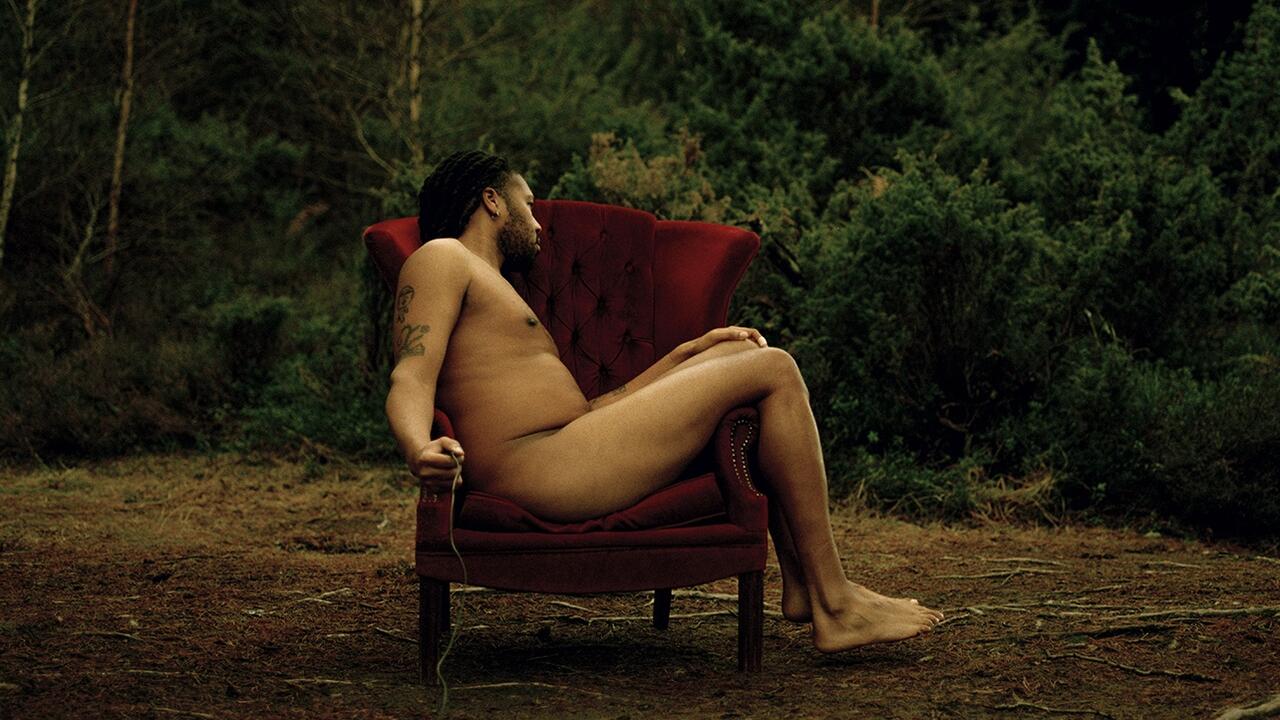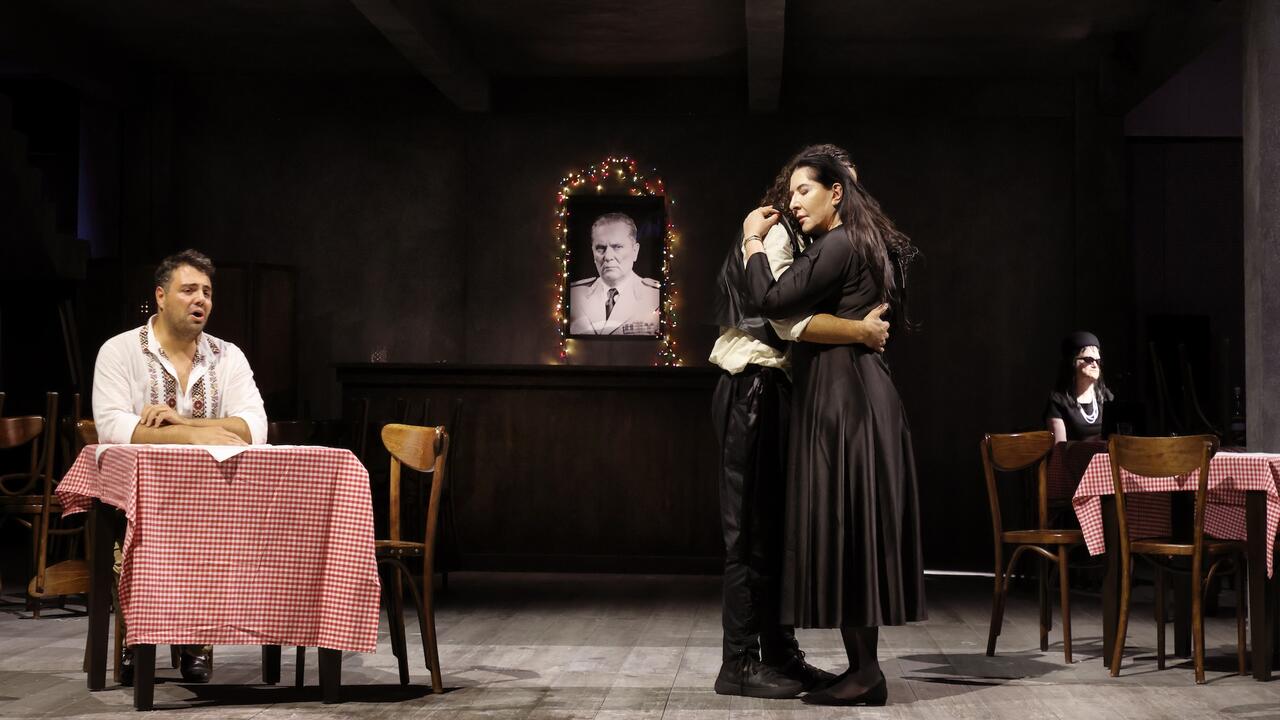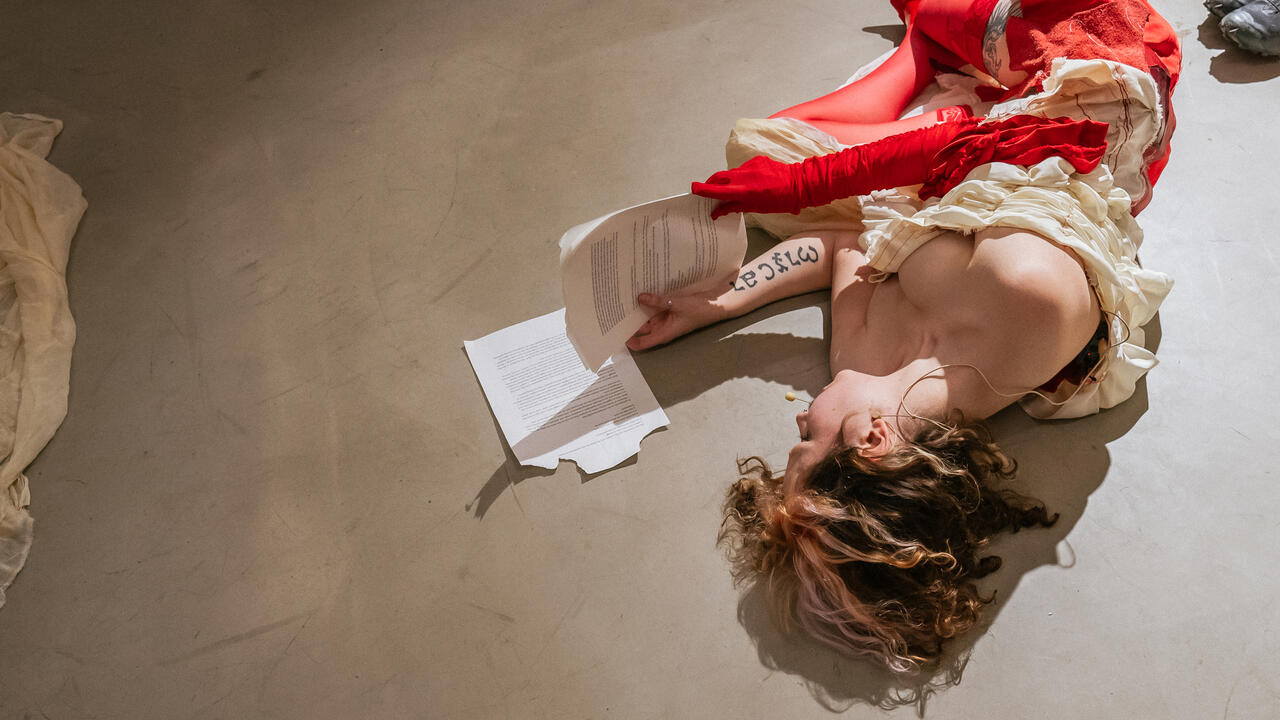How Artists in Buenos Aires Are Adapting to a Vibrant Yet Volatile Cultural Climate
From the effects of the economic crisis on art to the power of public participation and the most innovative non-profit spaces across the city
From the effects of the economic crisis on art to the power of public participation and the most innovative non-profit spaces across the city

- Click here for a specially commissioned artwork by Ad Minoliti
In late 2015, Argentina removed trade restrictions on fine art. Buenos Aires, long a centre for avant-garde literature and music, began attracting international attention for its galleries and art fairs.
Now, with the economy once again in freefall, artists and spaces – both commercial and non-profit – are adapting to a vibrant yet volatile cultural climate.
In this special city report, novelist María Gainza considers the effects of the crisis on art; artist Marta Minujín and curator Renata Cervetto discuss the power of public participation; and artist Osías Yanov highlights the most innovative non-profit spaces in Buenos Aires.
With commissioned photography by Santiago Hafford.

María Gainzais a writer based in Buenos Aires, Argentina. The English-language edition of her novel El nervio óptico (Optic Nerve) will be published by Catapult in April.
Translated by Kit Schluter.
State of Emergency: Artists and galleries in Buenos Aires are finding ways to cope with the economic crisis
The following is an oversimplification; I hope it comes across like an after-dinner chat. We were once the scum of humanity: less than a week ago, from the time of writing, we couldn’t even suppress the violence of a football game. Now, we’re the kings of the Earth, the Emily Posts of etiquette, because the G20 summit went off without a hitch. The mood of Argentina is a pinball: under the popular government of Cristina Fernández de Kirchner, we enjoyed a decade of boom bolstered by the high price of soy and notable social improvements (and later, we would discover, some notable corruption); now with Mauricio Macri as president, economic setbacks weigh heavily. Industrial productivity is falling, unemployment is on the rise, poverty is spreading. In his 2015 campaign, Macri spoke of himself as a leader who could attract to our country a ‘downpour of investments’. It was all demagoguery, a display of overabundant imagination – as when Charles Darwin’s sailors reported seeing a ‘snowfall of butterflies’ on the coast of Patagonia. Investors didn’t even flirt with the idea of coming here; the only one that did turn up was the International Monetary Fund.
How does this affect the art world? Galleries and nonprofit spaces are barely scraping by: the cost of rent, electricity and gas have risen fivefold in the last year, while inflation has essentially reduced their income to wallpaper. ZMUD gallery closed its doors recently only to reinvent itself as an agent without a physical location. Teaching workshops, the classic form of subsistence for artists, have become less common because of a lack of students. The art market is so small that, if it shrinks any further, it will disappear. Prices for works by local artists aren’t prohibitive and, with a bit of political will, collectors could keep buying them but they, too, seem affected by the prevailing social mood. Eduardo Costantini, the founder of the Museo de Arte Latinoamericano de Buenos Aires, recently declared in an interview: ‘Many of us are no longer billionaires.’ Readers responded sympathetically; as one artist said to him: ‘My greatest work is making it to the end of the month,’ which he then offered for the museum’s collection.
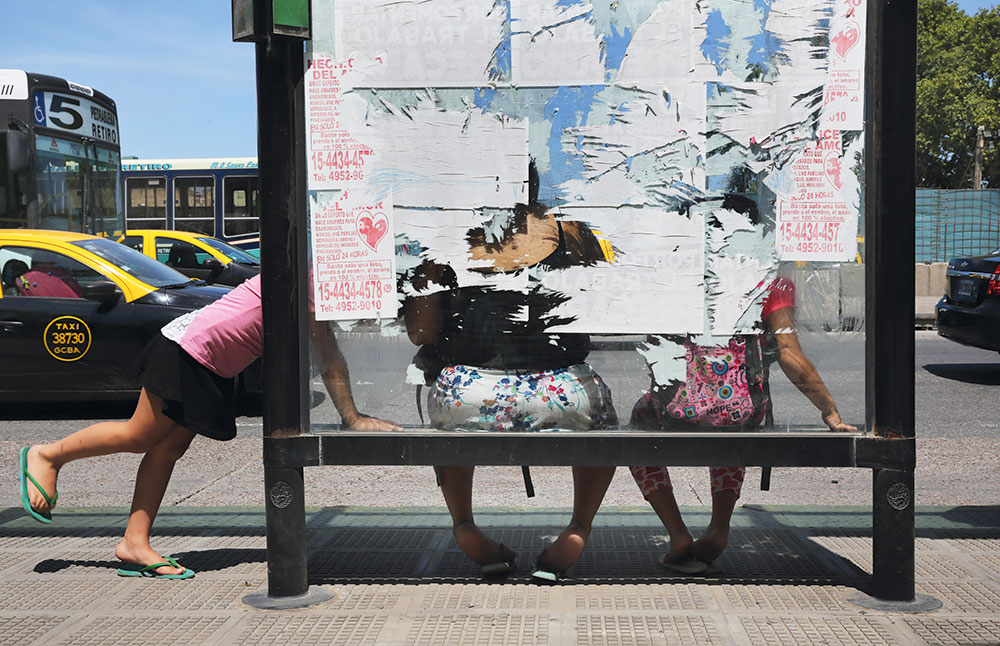
The Brazilian artist Hélio Oiticica wrote in one of his ‘Parangolés’ (1964–68): ‘De adversidade vivemos.’ (We live on adversity.) He wasn’t referring to the romantic obsession with creative activity in hostile conditions, recorded and exported to more stable markets, nor to the ‘discourse of the precarious’ so à la mode in European conferences. He meant, I believe, that adversity is the constant condition of creativity in third world countries. Artists keep on producing and alternative spaces emerge like mushrooms after the rain. Every week, another one pops up whose name I’ve never heard of. What happens when, instead of discarding them, we push them into the spotlight? On 8 September last year, Diego Bianchi, Luis Garay, Irina Kirchuk and Nicolás Robbio realized a performance in the landscape of a demolition site on Avenida Juan B. Justo. Todo es posible sobre una montaña de escombros (Everything Is Possible on a Mountain of Rubble) was their ironic yet sensitive response to the arrival of Art Basel Cities in Buenos Aires: a controversial event in a country experiencing a state of cultural emergency. Aside from a few additional exceptions, the crisis has not yet been reflected in other works: art, for artists here, seems to be a shelter from reality. Of course, this doesn’t signify a lack of awareness of reality.
As F. Scott Fitzgerald wrote in ‘The Crack Up’ (1936): ‘The test of a first-rate intelligence is the ability to hold two opposed ideas in mind at the same time, and still retain the ability to function.’ We Argentinians must be brilliant: since September last year, all the national museums, which were historically free, began to charge their visitors entry. A few months later, UNICEF announced that 48 percent of Argentinian children live in poverty.
Art survives in Buenos Aires because, despite adversity, intelligence and sensitivity remain constant. What fertilizes art here is not a stable economy. Its strength comes from elsewhere. From where, I don’t know – if I did, I’d visit that place more often. What I do know is that the most stable country in the world can still produce art that lacks power.
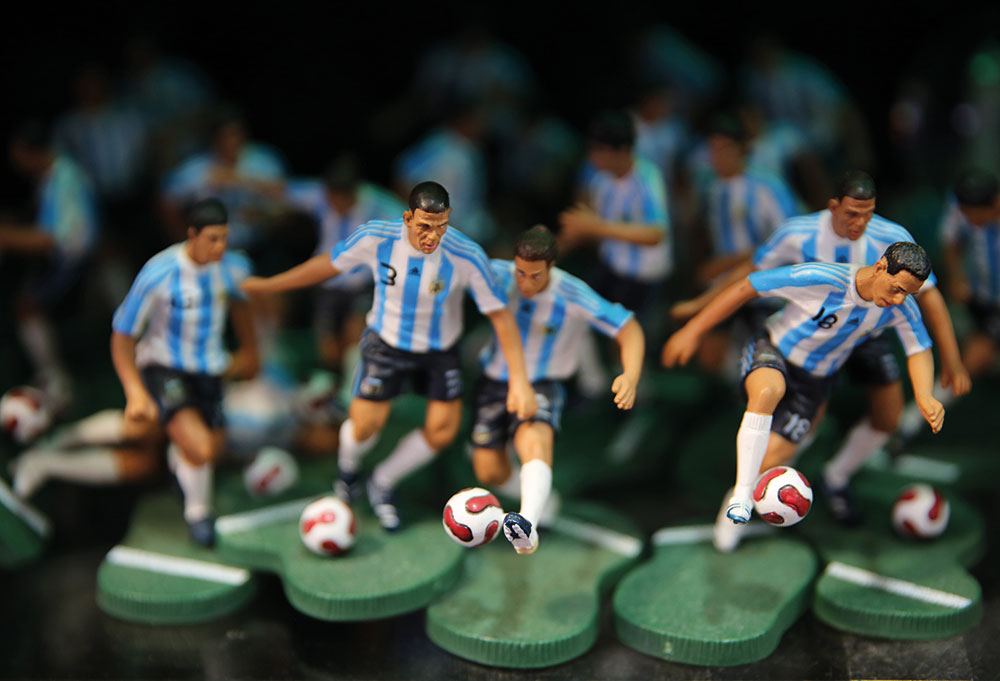
Marta Minujín & Renata Cervetto
Marta Minujínis an artist based in Buenos Aires, Argentina. In 2018, her work was included in ‘Radical Women: Latin American Art, 1960-1985’ at the Hammer Museum, Los Angeles, USA, Pinacoteca, Sao Paulo, Brazil, and the Brooklyn Museum, New York, USA.
Renata Cervetto is a curator and educator based in Buenos Aires, Argentina. In 2020, she will co-curate the Berlin Biennale, Germany.
Translated by Kit Schluter.
Graduate of Failure: Marta Minujín speaks to curator Renata Cervetto about her five decades of making art, staging performances and installing monumental sculptures in Buenos Aires
It’s four o’clock in the afternoon and Marta Minujín has decided to make a video for her Instagram page. A pile of overexposed mattresses in her studio serves as a set; the artist dons a latex horse mask and begins to play with her own artworks. Minujín has been known to wear her own face as a disguise, with masks that imitate her quintessential look: sunglasses and platinum blonde hair.
‘WhatsApp is incredible,’ she remarks. ‘It’s so fast! And Instagram? I have a massive audience. I put on my masks and I work for them. They’re the public whose fantasies I feed, because art is above politics.’
We begin, although when I arrive Minujín is already warmed up. Intrepid and infinitely curious, she claims her mind is a sponge that soaks up the collective unconscious.
‘From what I see, you get along better than I do with new technologies,’ I tell her. ‘Now your works enjoy a second life on social media.’
‘Yes, I love it! In 2015, I made an app for the first Performance Biennale in Buenos Aires. You could download it on your phone and, if you answered a few questions, it would show you the colour of your soul. And that way you could find your match.’ She shows me the app on her phone; her soul has many colours, made of little fluorescent strips.

Find Your Equal culminated the Performance Biennale in July that year. Participants gathered on the iconic Puente de la Mujer, or Bridge of the Woman, and held aloft their phones – with emblazoned colours – as Minujín flew overhead in a helicopter, sprinkling rose petals like confetti on the paired lovers.
‘I like when the audience participates in the experience and isn’t merely a spectator. My works have four stages: invention, management, realization and, finally, removal, which is the part completed by the audience. My most important pieces are always taken home by the crowd: that is why I haven’t become a millionaire! They take home pastries (El obelisco de pan dulce, The Obelisk of Pastries, 1979), cookies (El lobo del mar, The Sea Wolf, 2014) and books (El Partenón de libros, The Parthenon of Books, 1983/2017).
Minujín reflects on reconstructing El Partenón de libros at documenta 14 in 2017. ‘It’s impossible for me to outdo that work. For three months, books kept getting added and added, and it was even more wonderful to see it filled all the way to the top. People dismantled about six feet worth of books, whatever they could reach; the rest were taken down by cranes and we put them on the ground so people could take them home. Only 1,000 remained in Kassel in the local library, labelled ‘The Banned Books of the Parthenon’; another 2,000 went to Frankfurt. It’s hard to get back the sense of happiness that brought me. I miss that work terribly.’
‘You recently published a book of your diaries from your first years in Paris, Tres inviernos en París [Three Winters in Paris, 2018]. What was it like to revisit those years?’
‘It hurt a lot, because I miss those times. It still hurts. I’m compiling a book of letters I postmarked from New York in the late 1960s, which will hurt even more. My time in Paris and New York was fantastic. I was like an addict: I was happy, but also suffered.’
Minujín moved to New York in November 1965 with her work El batacazo (The Long Shot, 1965) disassembled in boxes. She had hardly arrived, and spoke little English, before she presented the piece at Leo Castelli Gallery. For the remainder of the decade, she moved between New York and Buenos Aires, her career accelerating at jet speed. Minujín developed a provocative reputation, especially in her hometown, where, in 1964, according to the newspaper La Prensa, she unleashed a ‘witches coven’ on local television: ‘A rearing pony splashed paint on the audience; hens filled the studio with feathers and cackling; flexible body builders popped balloons with aestheticized gestures, all while Minujín improvised a Sioux dance and [the host, Augusto] Bonardo, screamed: “Cut! Cut! Get this demented woman out of here!”’
In 1969, she co-founded the underground magazine Lo inadvertido (The Unnoticed) with Daniel Beilinson, and adopted the pseudonym Andina (the Andean) in its pages, which became a favourite nickname. The magazine, composed of photocopies coloured in with pencil, was distributed by hand on the streets around the French Embassy in Buenos Aires.

‘Thought can’t be vertical,’ Minujín tells me, swinging her forearm up and down at a 90-degree angle. ‘Everything changes depending on the point of view, as in the theory of relativity. People are slowed down by education. You have to be alert all the time because they’ll domesticate you any second. You can’t let yourself get lazy.’
When I tell her that what she is saying makes me think of the fluxus artist Robert Filliou, who tried to awaken creative consciousness by placing special emphasis on child education, she replies: ‘I loved him. He was a genius naïf. We were all friends in Paris in the 1960s: Lourdes Castro, René Bértholo, Robert and I.’
On trips back to Buenos Aires, Minujín spent much time with the artist Federico Manuel Peralta Ramos. His iconic Manifesto gánico (Ganic Manifesto, 1968) proclaimed art to include ‘everything that provokes movement, shakes and moves: a goal in a football game, love satisfied, hunger satiated, et cetera […] Life is art. Everything is art.’ Upon her full return from New York in 1974, Minujín would meet frequently with avant-garde artists such as Charlie Espartaco, Chito Méndez Casariego, Agustín Merello and Peralta Ramos, with whom she collaborated on La academia del fracaso (The Academy of Failure, 1975). That exhibition, which opened at the Centro de Arte y Comunicación in Buenos Aires exactly one year before President Isabel Perón was overthrown by a military coup, encouraged visitors to consider the successful aspects of their failures.
The Academy of Failure works in the same way as the theory of relativity,’ Minujín says. ‘Everything changes in relation to the point of view from which it is seen: failure can be a success and success can be a failure. Vincent van Gogh was a failure in his lifetime and achieved success after he died; Hitler, the opposite. Many people who visited the exhibition were successful failures: Ítalo Luder, who was supposed to become president before the coup; Armando Bó, who never won an Oscar. The Academy of Failure gave their failures a sense of comedy.’
I ask Minujín whether she still considers herself a graduate of The Academy of Failure, after all these years – whether she feels her reputation has changed, as she’s aged. ‘I don’t think time exists for anyone. I believe I’m ageless. I’ve always thought so. At 20, I thought I was eight. Now, well, I’m not 80 yet but I feel like I’m 20. However, I feel like there’s much less time left for me to do things. That’s why I use the slogan: “The more time you have, the more time you waste. And the more time you spend, the more time you gain.” I prefer to do, do and do. As for my social life, as Octavio Paz said: “Art dissolves into social life.” Eternity is no good for anyone.’

Osías Yanovis an artist based in Buenos Aires, Argentina. In January, his work was included in the group exhibition ‘Still I Rise: Feminisms, Gender, Resistance’ at Nottingham Contemporary, UK.
Translated by Aitor Arauz.
Gallery, Museum, Kiosk, Disco: A resilient network of artist-run spaces is leading the charge in Buenos Aires
With its array of basements, hidden nooks and semi-derelict shops, the city of Buenos Aires seems designed to harbour those nodules of countercultural energy where independent art spaces so often develop. With their ever-changing addresses and names, these projects open and close while their audiences and organizers generally remain constant. They form an underground network that, for decades, has been the city’s most important reservoir of creativity. These are projects that nourish a hallucinatory and sometimes hostile metropolis: together they provide alternatives to the professionalized and institutionalized structures of the art world and are instead defined by ephemerality and dialogue.
UV
Since it was founded in 2015 , UV has been a favourite space for those with marginal sensibilities – for the queers, the slackers and the hard partiers. Its exhibitions and ‘Perfuch 3D’ (2018) performance series – featuring Hoco Huoc, Maruki Nowacki, the BásicaTV collective and others – have engaged head-on with contemporary politics.
La Baranda
La Baranda was founded in April last year as a gallery that organizes weekly exhibitions at a fixed location: the handrail in the corridor of the Centro de Investigaciones Artísticas (Artistic Research Center). Inspired by the transitory nature of that hallway, former fellows of the centre continue to curate group exhibitions around issues of accessibility and collective labour.
Coral
The artist Federico Manuel Peralta Ramos coined the term gánico to signify the radical ability of the creative act to splinter structures of power. Coral is a meeting place whose programmes are driven by that impetus. Co-run by Mariela Scafati, Ana Carolina, Marina De Caro and Daiana Rose, the space has featured recent projects by collectives Cromoactivismo and Serigrafistas Queer as well as the artist Bruna Kury.
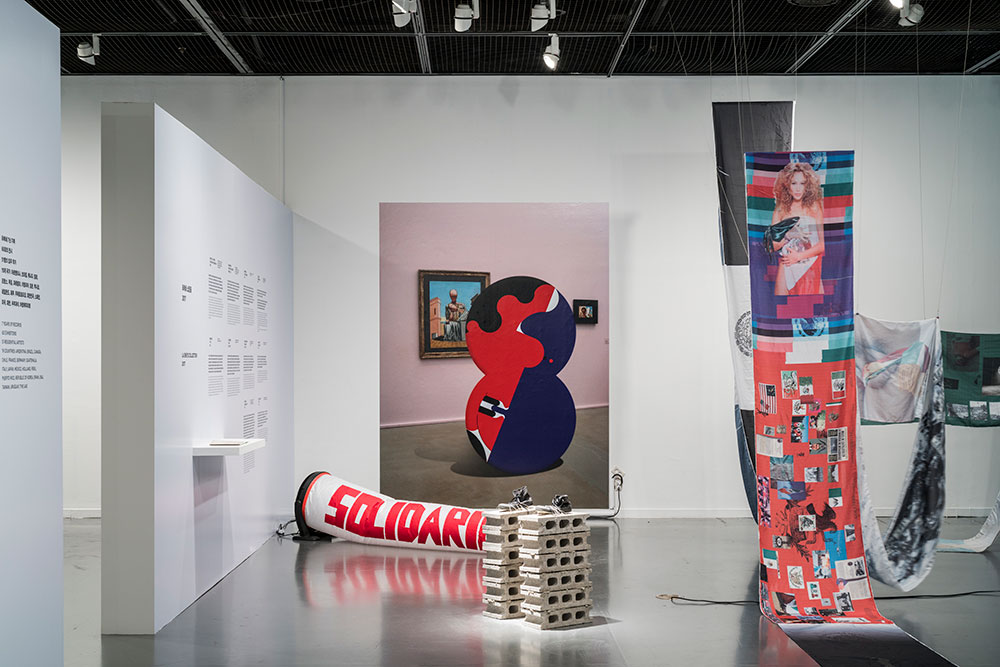
La Ene
La Ene, or the Nuevo Museo Energía de Arte Contemporáneo, was founded in 2010. Since then, it has been an advocate for copyleft in the arts, altering what it means to be an institution: its staff will make their entire archive available to the public, upon request, on an external hard drive. Recent exhibitions have featured work by Ad Minoliti, Sol Pipkin and Marcela Sinclair.
Chiquita
Chiquita is an art space in a box. Founder Julián Sorter invites participating artists to produce a project in a small cardboard box, which can function as a gallery, a museum, a kiosk or a disco. Chiquita could be thought of as a tiny window onto another world, like a miniature souvenir of the Taj Mahal: look closely and you may see dazzled tourists swarming inside.
Mostro
Established in 2011, Mostro is an annual, two-day interdisciplinary event that combines visual arts, music and theatre. Co-curated by Marcelo Galindo, Maximiliano Maito and Juan Tobal, it has featured performances by Dudu Alcón Quintanilla, Ariel Cusnir and Mariana Lopez.

Constitución
Founded in 2017, by artists Alberto Antonio Romero and Martín Fernández, Constitución is a space in barrio San Cristóbal that showcases the work of emerging artists in a variety of experimental exhibition formats. In 2018, they had presentations by Alfredo Dufour, Martin Farnholc Halley, Carlos Huffman and Catalina Oz.
Ciclo de acciones
Ciclo de acciones is a year-old project within the annual programme of MUNAR, a nonprofit exhibition space founded in 1989. Curated by Gonzalo Lagos, the cycle
of performances seeks to promote practices that consider bodily action as a vehicle of knowledge. Past participants include Sofia Durrieu, Dana Ferrari and Alberto Antonio Romero.
El Universo
The most recent of several spaces founded by artist and poet Fernanda Laguna, El Universo is like a hoarder’s living room. With its warped shelves overladen with trinkets and useless tchotchkes, it is a loving sanctuary to the idiosyncratic, nonfunctional and banal.
Piedras
The artist-run gallery Piedras is located in barrio Almagro. Its co-directors, Rafael Equivocado and Santiago Gasquet, have organized exhibitions that reflect on slippages between the productive and the unproductive as well as the importance of leisure and affection. Recent shows have featured work by Fátima Pecci Carou, Constanza Giuliani and Monica Heller
- Click here for a specially commissioned artwork by Ad Minoliti
This article first appeared in frieze issue 201 with the headline ‘Buenos Aires’
Main Image: Paraíso Fiscal, KOMOSABERLO for Lolo y Lauti's Perfuch 3D, 2018, performance documentation. Courtesy: the artist and UV Studios, Buenos Aires; photograph: Santiago Valentinis









